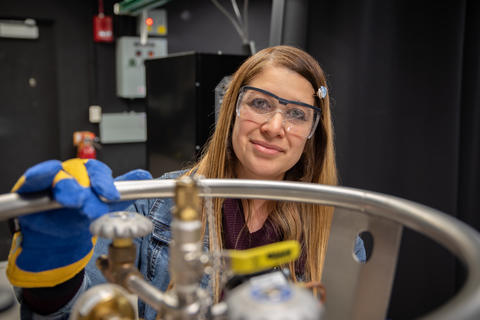
To reach this point, NIST postdoctoral researcher Maria Munoz journeyed across borders and seas. Take a trip with us as we trace her career path from elementary school math to spectroscopy.
Mexico
Mexican born and raised, Maria fell in love with math at an early age. Even better, the use of math symbols to explain what was happening in the world — the physics of life — soon became a passion.
Maria went to a STEM-centric high school similar to U.S. magnet programs, where she took university-level courses in physics and excelled in national competitions to solve theoretical physics problems. The commitment to science continued at the Universidad Autónoma Metropolitana, where she earned a bachelor’s degree in engineering physics.
Japan
Earning a highly competitive scholarship, a partnership between Mexico and Japan that only awarded funds to 13 selected candidates across the entire nation, Maria headed overseas. Japan’s reputation as a technological powerhouse intrigued her, and she earned a master’s degree at the Yokohama National University.
There, Maria began to refine her research scope from physics and electronics to optics and spectroscopy, the study of materials’ optical properties.
United States
Her research scope became even more refined. Maria moved to Miami and began her Ph.D. studies at Florida International University, exploring hybrid materials (a combination of organic and inorganic components) with promise mainly for solar energy capture. Thin films of these materials could make solar cells cheaper and smaller.
But this part of her international journey is not over. Maria joined NIST’s staff this past June via the NRC Research Associateship Programs. Here, she will put the hybrid materials from her Ph.D. studies to the test in a whole new way.
The plan — a new line of research — is to expose the materials to magnetic fields and see how they behave. This could open up new opportunities for using them beyond solar energy, potentially even to make quantum computing systems more stable.
We’re excited to see what lessons she learns along the way.
Follow us on social media for more like this from all across NIST!

